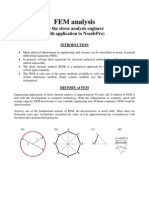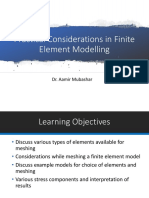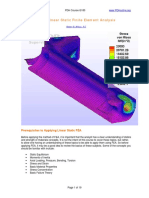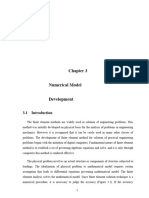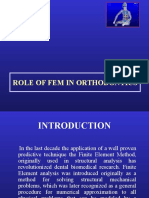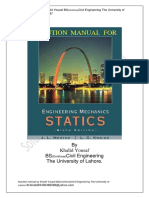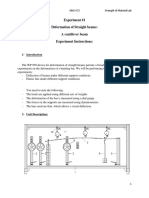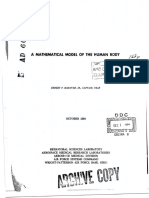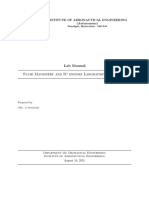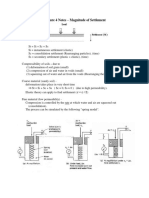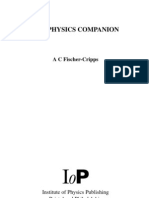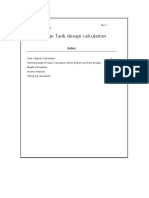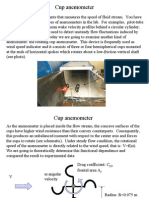0% found this document useful (0 votes)
64 views20 pagesFEA Basics To Upload
The document provides an overview of finite element analysis (FEA) including the typical steps involved: 1) preliminary decisions, 2) preprocessing, 3) solving the model, and 4) postprocessing. It then discusses various elements types used in FEA such as beam, shell, solid, and special elements. Guidelines are provided for selecting the appropriate element type for different applications.
Uploaded by
atul patilCopyright
© © All Rights Reserved
We take content rights seriously. If you suspect this is your content, claim it here.
Available Formats
Download as PPTX, PDF, TXT or read online on Scribd
0% found this document useful (0 votes)
64 views20 pagesFEA Basics To Upload
The document provides an overview of finite element analysis (FEA) including the typical steps involved: 1) preliminary decisions, 2) preprocessing, 3) solving the model, and 4) postprocessing. It then discusses various elements types used in FEA such as beam, shell, solid, and special elements. Guidelines are provided for selecting the appropriate element type for different applications.
Uploaded by
atul patilCopyright
© © All Rights Reserved
We take content rights seriously. If you suspect this is your content, claim it here.
Available Formats
Download as PPTX, PDF, TXT or read online on Scribd
/ 20














